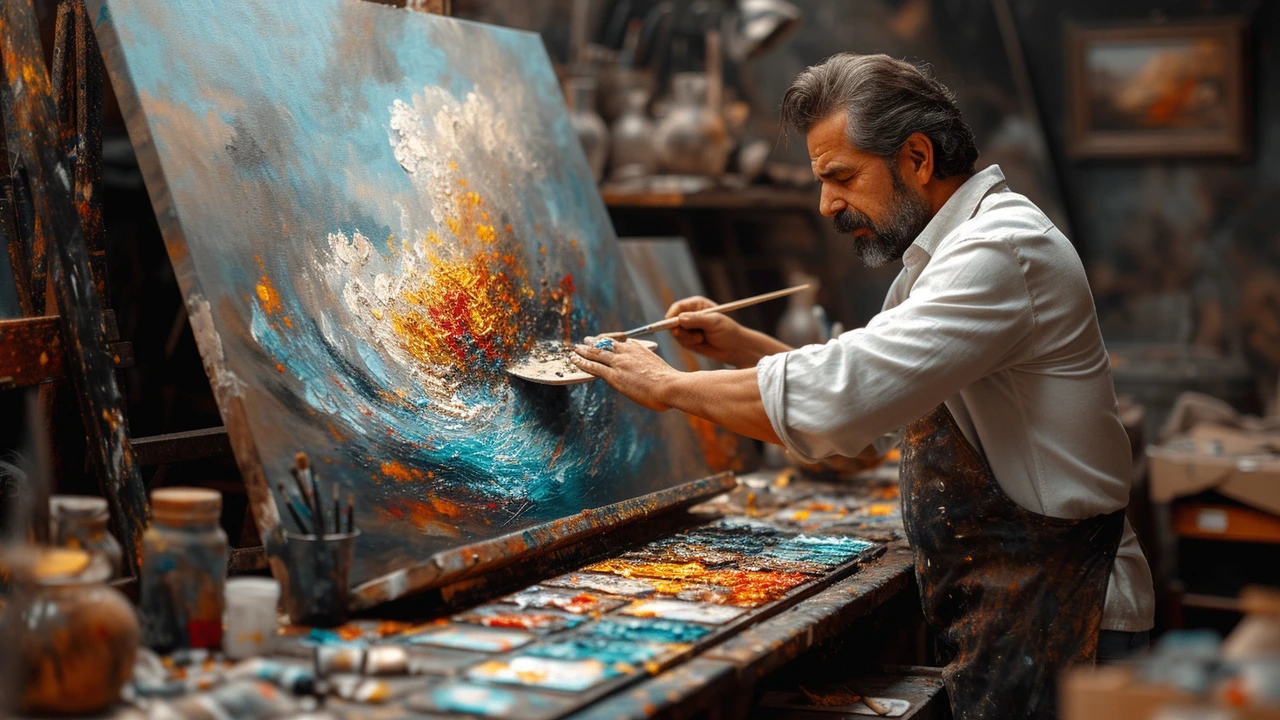Art Basics: A Practical Starter Guide
Ever wondered what separates a sketch from a strong drawing? Art basics are simple rules that make work read clearly. Start by learning the elements and principles that artists use every day. Once you know them, you can make smarter choices in color, composition, and technique.
Core Elements Every Beginner Should Master
Line, shape, value, color, texture, and space are the building blocks. Line guides the eye. Shape defines objects. Value creates depth by showing light and shadow. Color sets mood and tells the viewer where to look. Texture gives tactile interest, and space controls distance and overlap.
Principles like balance, contrast, emphasis, rhythm, movement, and unity turn those blocks into clear pictures. Try a quick study: make three thumbnails before a larger piece. Thumbnails force you to solve composition problems fast. You will find the strongest layout in minutes.
Smart Practice Habits
Choose a small set of tools and learn them well. For drawing start with a mechanical pencil, a softer 2B, and blending stump. For painting try three tubes: a warm and cool primary and a neutral. Limiting options helps you focus on form and color relationships instead of chasing every new gadget.
Copy old masters to learn decisions they made about value and composition. Recreate one small section, not the whole painting. Photorealism, for example, teaches precision in value and edges. Abstract Expressionism teaches gesture and emotion. Studying both lets you pick practical skills from different styles.
Use short daily exercises: 10-minute gesture drawings, 15-minute color studies, and one 60-minute focused piece each week. Keep a sketchbook as a progress log. Date entries and write one line about what you tried or learned.
Critique smartly. Ask three questions: Does the focal point read? Is the value structure clear? What would I change with one extra minute? Answering these gives quick, useful fixes.
Look around for inspiration in design and public art. Bauhaus shows how form follows function. Land art and installation work teach scale and how people move through space. Mix ideas—use a Bauhaus grid for a poster, borrow color schemes from a Baroque painting, or think about gesture from Fluxus pieces.
If you want quick resources, pick one good book and one online course. For books try a basic drawing manual and a short color theory guide. For online, follow a weekly challenge or time-limited assignments. Visit local galleries with a question in mind — look for how artists solved space or color. Join a critique group or an online forum and post one image every month. Feedback focused on one or two points helps more than praise. Track three improvements each month: cleaner edges, stronger value range, or better composition. Small measurable goals keep progress honest and steady.
Most of all, make more work. Quantity builds taste and speed. Swap perfection for steady, focused practice. That's how basics become intuition.
Start small, pick one lesson, repeat it until it feels natural, and enjoy the steady improvement over time daily.

